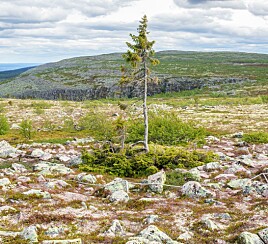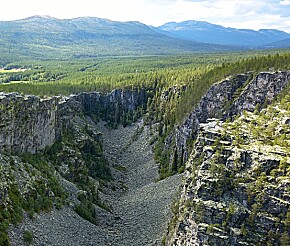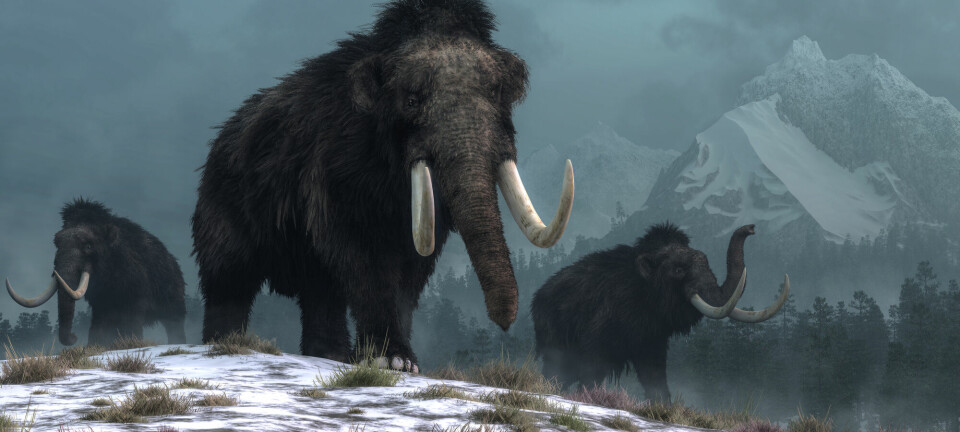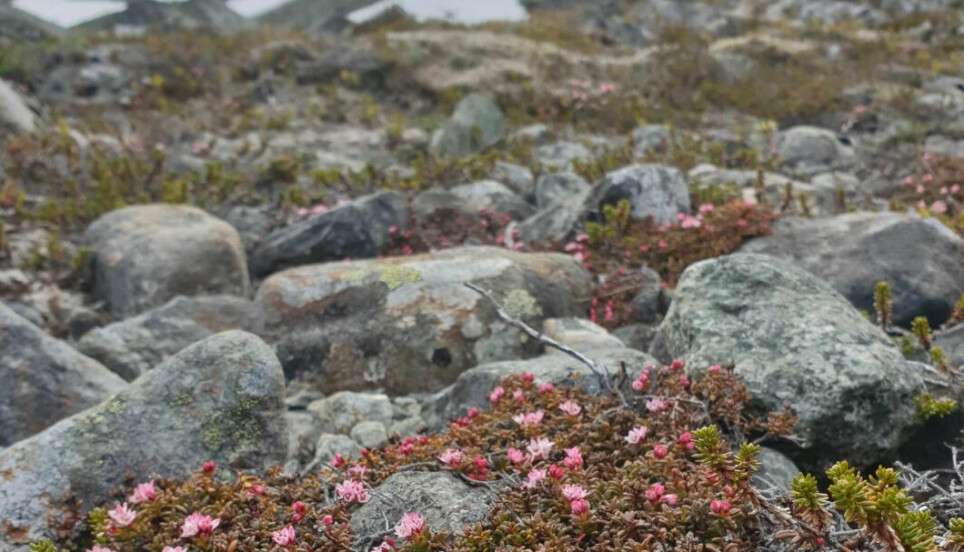
These were the first plants to appear in northern Norway after the last ice age
A large DNA study tells us how nature reacted when the climate changed. The knowledge gained will be used to create better models of what could happen in the future.
During the ice age’s maximum breadth 26 000 to 19 000 years ago, Norway was tucked under as much as 3 000 meters of ice.
The landscape that emerged when the ice finally melted was barren.
Researchers at UiT Norway's Arctic University have sampled lake bottom sediments from ten lakes in the far north of the country. There they found a hidden story about what happened when the land was once again covered with plants.
Thousands of pieces of plant DNA were found in the sediment layers at the bottom of the lakes.
Leaves and other debris from the plants had blown into the water or had been carried by streams. The remains settled on the bottom of the lake, and DNA traces from them were preserved to this day.
This discovery offers researchers a detailed overview of how the environment changed in the north at the end of the Ice Age and beyond. The research results were recently published in the journal Science Advances.
16 000 years
The new study is based on the same samples that supported a large study published last year.
The study showed that biological diversity continued to increase throughout the last 10 000 years. Pollen studies, on the other hand, indicated a stabilization or decline.
Most viewed
Now the researchers have taken a closer look at the ecosystem and what factors had the most influence on when different plants appeared.
“Some of the earliest samples we analysed were 16 000 years old and older than previous vegetation reconstructions from northern Norway,” says Dorothee Ehrich, a researcher at UiT’s Department of Arctic and Marine Biology.
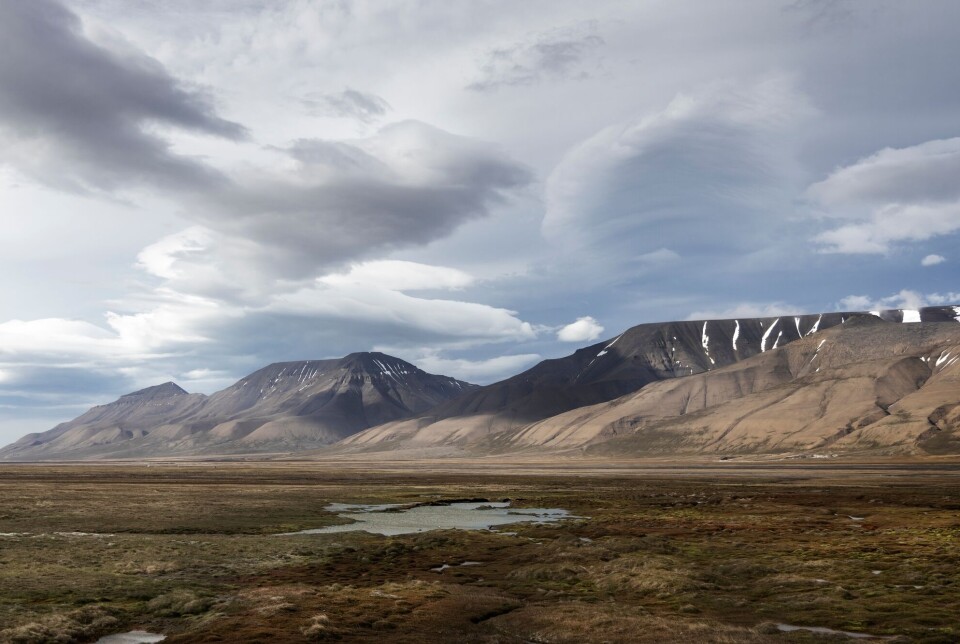
Like Svalbard today
Mosses and herbs got things going, along with some grass species. A low green carpet began to cover the otherwise bare mountains and plains.
In the beginning, the landscape was reminiscent of what you can see on Svalbard today, says Inger Greve Alsos, a UiT professor who led the study.
“To begin with, you only have the most cold-tolerant species. They can withstand growing in relatively dry places. They require a lot of light and aren’t competitive. This means that they need to have some open land to be able to establish themselves,” says Alsos.
The researchers have used the herbarium at UiT to create a large library of DNA from most plants in the Arctic. This way they could match the bits of DNA they found in the samples with the library collection and find out exactly what kind of species they had.
In addition, researchers have an overview of the plant characteristics, such as what kind of temperature, pH and light conditions they need, and how they spread.
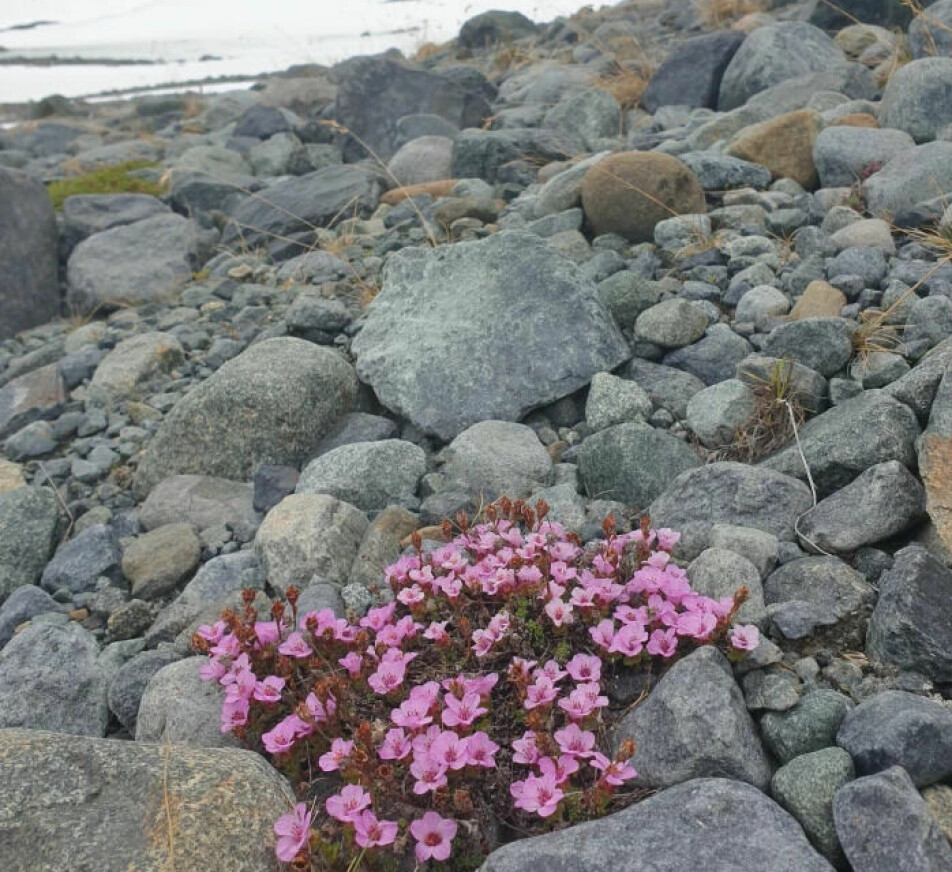
Heather and small bushes
The first dwarf shrubs appeared 14 000 years ago. Dwarf shrubs include blueberries, crowberry and heather.
Crowberries, blueberries and other heather species characterize the region today, says Dorothee Ehrich. While some such species were quick to spread, others took their time.
“Crowberries were one of the first, while other species gradually became common starting 11 000 years ago and later. Several heather species, like Arctic white heather (Cassiope tetragona) and blue heath (Phyllodoce caerulea) only appeared during the last 6 000 years.
Biodiversity began to increase 13 000 years ago.
“During this time there was a rapid increase in biodiversity with the migration of many new herbs, grasses and aquatic plants,” says Ehrich.
“Birch trees, which dominate northern Norwegian forests today, were first discovered almost 13 000 years ago, but unfortunately our genetic method doesn’t allow us to distinguish dwarf birch (Betula nana) from white birch (Betula pubescens), which probably came a little later," she says.
Rise in temperature
About 11 700 years ago, the temperature started to rise more. A few hundred years later, most of the ice had melted in the far north of the country.
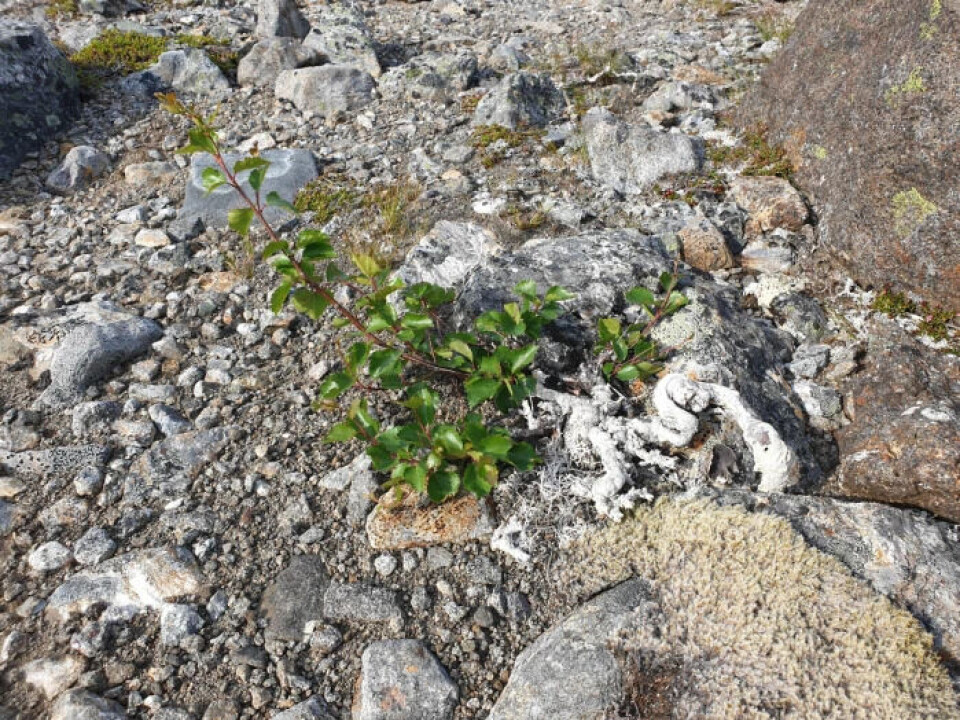
“You can see that the ecosystem had become much more diverse by then,” says Alsos.
“We have plants that are adapted to strong sunlight, we have ones that are adapted to shade, ones that grow in dry areas and in wet areas. We have all types of plants.”
“In principle, it was warm enough for most of the plants, but a lot didn’t emerge until later,” she said.
Beech forests became more widespread about 10 000 years ago, and pine trees were in place around 9500 years ago. The last tree species, grey alder, emerged 7800 years ago.
Stabilization
By 12 000 to 11 000 years ago, the ecosystem had developed plants with all types of characteristics and preferences.
Nature continued to change, and there were waves where some types of plants increased and others decreased.
These developments continued until about 8000 years ago, when the ecosystem became fairly stable, although new species have continued to emerge right up to our time.
Takes a long time
The study shows that it takes a long time from the start of a major climate change until nature has finished changing.

“From the point when the temperature is okay and you have all the components of the ecosystem in place, it still takes a couple of thousand years before everything becomes stable,” says Alsos.
“When things have stabilized, and we still see new species emerging, the ecosystem isn’t that affected. The ecosystem is functional the way it is and can tolerate the introduction of new species without causing changes in ecosystem functions,” she says.
What the researchers are learning is relevant to understanding more about how nature could react to today's climate change, according to Alsos.
“We’re in a period of major change now. What we can expect is that it’ll take several thousand years before a new ecosystem stabilizes.”
As the temperature rises to a new level, initially a lot will happen in a relatively short time. After that, we can expect a long period of instability.
Temperature most important
The researchers have looked at which factors were most important for the arrival of plants. Some plants took off right away, while others, such as common heather and cow parsley, were not established until several thousand years later.

First, the area had to be available for colonization, and it had to be ice-free, Nigel Gilles Yoccoz said.
The coast became ice free earlier than the interior.
“Beyond that, the most important factor was how the temperature evolved in the next 3000 to 4000 years,” says Yoccoz, who is professor of statistical ecology at UiT.
First to come were species that tolerate cold well.
“With the increase in temperature, species that need higher temperatures emerge. For example, trees need to have summer temperatures of more than ten degrees to grow their trunk,” says Yoccoz.
Expect surprises
“We also found that soil disturbance and the need for light were important,” Yoccoz says.
Species that often grow in the shade of other plants arrived later than species that grow best in full light.
Other factors, such as how the plants spread and the need for moisture, were less important.
“But even if these factors explain part of the variation in postglacial arrival times, there’s plenty that we can’ t explain yet. This means that some species arrived several thousand years later than we’d expect,” says Yoccoz.
“Sometimes it could be because the plants had to move over really long distances, and sometimes we just don't know why.”
“In practice, this means that the development we’ll see in the coming decades is partly predictable and partly not. In other words, we can expect a lot of surprises,” says Yoccoz.
Using knowledge to model the future
What will the Arctic look like in 2000 years if say, the temperature rises by two degrees?
We could speculate, says Alsos, but she and her colleagues want to do more than that.
“What we’ve started working on is putting the facts about the past into a computer model so that we can model what will happen in the future instead of merely speculating," she says.
“The data we have here are the most refined data we have from the past.”
The researchers will use them to improve models that show what kind of environmental changes we can expect in the future.
Translated by: Ingrid P. Nuse
Reference:
Inger Greve Alsos et.al.: Postglacial species arrival and diversity buildup of northern ecosystems took millennia. Science Advances, 2022.
———
Read the Norwegian version of this article at forskning.no
------








